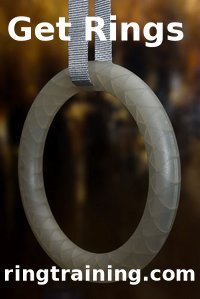Watching a bit of the Tour de France, when the riders seem to effortlessly climb up massive mountain sides, there’s no question in our minds - those guys are in good shape. When a new 100m sprinting record is set, nobody questions the sprinter’s fitness level. A marathon runner? Yep - definitely fit. How about one of the cast on “Dancing with the Stars”? See their abs? They’re as lean as lean can be. And what about bodybuilders, gymnasts, weight lifters, firefighters, action heroes, golf players and pole vaulters? Would we classify all of these individuals as being fit? Probably. But what does that really mean?
At first, it seems a simple question. Everyone knows what fitness is. Or do we? We can easily peg a person who is fit and in shape, but are they really fit? What does it mean to be fit? Is it a low body fat percentage? Is it an abundance of muscle mass? Is it speed and agility? Is it strength? Or is it simply the ability to perform well at whatever you do?
For practical purposes, being functionally good at the day to day tasks that require some form of physical exertion may be the essence of what being fit is. The dancer is fit because she can dance well. The gymnast is fit because he possesses a significant amount of strength. But a computer programmer (like myself) wouldn’t be classified as being fit because he is good at rolling out of bed and getting to the office on time. Being fit requires additional attributes besides being able to exceed at one’s own work. In order to be fit, one must be able to do well at a variety of physical activities.
The dancer and gymnast each exceed in numerous physical abilities that contribute to their ability to perform. Strength, endurance and flexibility are just a few of these attributes. By exceeding in these multiple areas, they are also likely to do well in physical tasks outside of their domain. The computer programmer, on the other hand, may not possess enough additional abilities, outside of the scope of his or her job, to be classified as fit. While the programmer may exceed at specific tasks, he or she may not exceed in other areas. Therefore, they must work in extra curricular physical activities in order to achieve a higher fitness level.
The definition of being fit, therefore, is to not only be functionally able, but being functionally able across multiple domains. For most of us, who aren’t gymnasts or dancers, this requires going to the gym, getting out for runs and possibly taking up Yoga or Tennis or a joining a rec league of some sort.
The benefits of truly being fit, then, are significant. Many of us strive to be fit simply to be healthy and look good, but besides helping us maintain a good body weight, fitness enables individuals.
Being fit allows us to lift heavier items without injury. It lets us pick up our children or grandchildren to give them a bear hug. It helps us balance when on the roof, putting up our Christmas lights. Fitness lets us play soccer with our kids after school. It helps us run up 5 flights of stairs when we’re late for class. Whether hiking or biking, being fit helps us enjoy our environments. We can take pleasure in canoing a river or exploring the wilderness. The long walking tours when traveling abroad are easier. Shoveling snow or mowing the lawn are less taxing.
No matter who we are, what we do or what our age is, striving to be fit should be an important part of every one’s life. For being fit gives us the means to do the things that need to get done and live our lives as we wish.
No Comments | In: Uncategorized | | #


